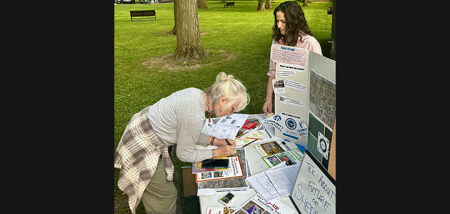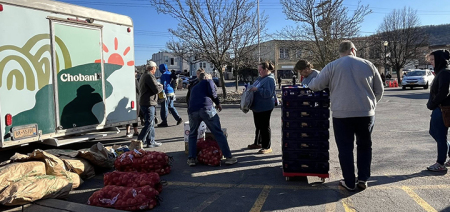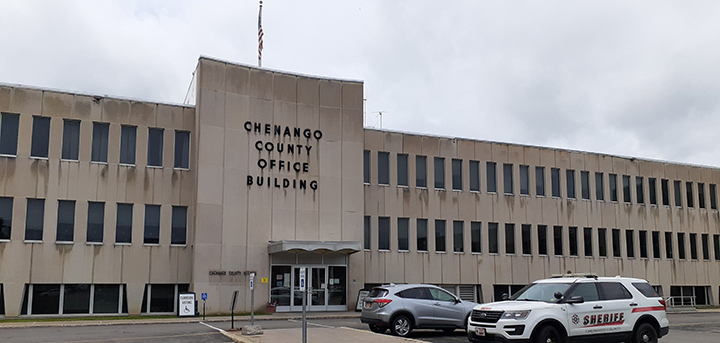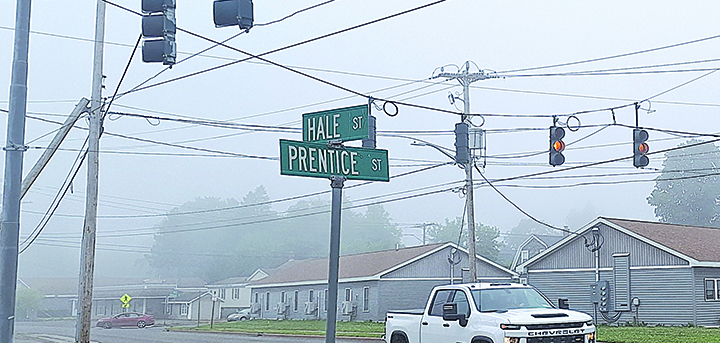NY State Steps-up Response To Coronavirus Pandemic
Published:
March 23rd, 2020
By:
Tyler Murphy
CHENANGO – Despite, almost daily, new and unprecedented measures to contain the coronavirus pandemic, it has continued to spread with more than 15,000 total confirmed cases in New York State reported by Monday morning.
Some researchers expect the virus to reach its peak in Chenango County in May, with estimates ranging greatly between 2,600 and 30,000 local residents contracting the disease, depending on the containment efforts. Worst case predictions say even more than that could eventually get sick by August.
Monday Chenango County recorded its third confirmed case of the virus. The first case in New York State was reported on March 1.
New York State Governor Andrew M. Cuomo has assumed a lead role in managing the public health crisis and given daily public briefings to New Yorkers, offering advice, reviewing the latest statistics, announcing new measures, and talking about what might be ahead. Summaries of the updates can be found on www.governor.ny.gov and video of the governor’s daily news conferences can be found on youtube.com and facebook.
A story in the New York Times on Friday, headlined, “Coronavirus Could Overwhelm U.S. Without Urgent Action, Estimates Say,” discussed the research predictions of Columbia University scientists using the newspaper’s collected data to make infection estimates for counties in New York State and the U.S.
Looking at Chenango County, researchers predicted that in a best-case scenario, with the most extreme measures possible being taken by government, about 2,600 of the roughly 50,000 people living here would get the virus by August.
More likely, based on a mix response of measures, researchers estimated 33,000 people, about 66 percent of residents would contract the virus by August.
With no measures taken to stop the spread, researchers said about 43,000 in Chenango would get sick, about 86 percent of the population. Similar percentages could be found in counties all across the state.
When you imagine officials reviewing this sort of data behind closed doors, you begin to understand why such drastic actions are now being taken.
Similar to what state officials have said, researchers believe virus infections will peak in the next two months. For Chenango, May is expected to be the worst month under current projections, with the worst being over by September. Cuomo said the outbreak would not peak for about 45 days in New York.
This highlights concerns that many short-term closures will be extended. The pandemic is very unlikely to let up in April, only worsen, as Vice President Mike Pence warned this weekend. Many schools and business closings are likely to be extended in the coming months. Many layoffs and jobs losses are likely and many other economic impacts are negative and uncertain.
You can read more about the statistics and look at a graphics on the continuing coverage at nytimes.com. https://www.nytimes.com/interactive/2020/03/20/us/coronavirus-model-us-outbreak.html
As the state and federal government have stepped up their responses, many local officials seem to be lagging behind in theirs.
As many local business leaders reviewed the state’s decree and searched desperately for ways to keep their businesses essential on Monday and avoid shutdowns and layoffs, a number of public officials seemed to do the opposite. A number of government offices, including courts and towns declared states of emergency and sent their employees home, or are having them work remotely.
After closing, many offered little useful information except to tell residents to mail in their taxes. A woman contacted the paper Friday to say a relative had been stuck in jail due to pending paper work. Others expressed concerns and wanted more useful local information from local officials.
The Chenango County Department of Health sent out a release when the outbreak first began. The release contained no local information or any information really. It was only a link directing you to the Center for Disease Control’s website, where it offered you general information about the virus.
That communication, in my mind, seems to represent a summary of how local officials have been responding to the crisis, at least when it comes to communication with the public in Chenango County. The Department of Health has declined to release any information about where in Chenango County these cases are being confirmed, citing privacy. Many residents have asked for more public information to be released due to the special circumstance and the national emergency.
Chenango Department of Health officials have compared the outbreak to the annual flu in terms of deaths and asked people to not overreact. Cuomo made a similar statement Sunday comparing the virus to annual deaths associated with the seasonal flu, about 34,000, to New York’s COVID-19 crisis.
But of course, just looking at the responses, this is not just the seasonal flu. Though death rates are low now, researchers have said millions could die in countries across the world if drastic steps to slow the virus are not taken.
I ask that local supervisors to write a letter to their constituents explaining their town’s plans in detail. I would also like to see the local Department of Health offer daily updates to the public for Chenango specifically – even if “no update” is the only information being provided. We will run these in the Evening Sun.
Besides the state’s response, some local authorities are responding strongly to the crisis. Norwich Mayor Shawn Sastri and the common council made the topic a priority during their last meeting and are working on a plan to keep residents informed. Also, Norwich Superintendent Diana Bowers and the board of education have also been at the forefront of providing information to parents and students. There are many others.
Some of the biggest local responses so far have been from healthcare providers, like the Basset Healthcare Network and United Health Services at Chenango Memorial Hospital. These healthcare workers and our first responders will become local heroes in coming months.
They are the ones on the frontline of contacting patients, answering questions, getting tests and overall, they are most directly concerned over how this crisis is going to impact their systems in the next few weeks in Chenango.
Sunday the governor announced that President Donald Trump and the Federal Emergency Management Service had declared an emergency in New York and that federal aid would cover about 75 percent of the state’s direct costs in responding the crisis. Yet Cuomo said no state would even be able to afford 25 percent of the costs needed to combat the pandemic and asked for the federal government to cover 100 percent of the costs.
After first experimenting with an order of keeping 50 percent of all non-essential employees in the state home last week, then 25 percent a day later, the order expanded to include all non-essential businesses and all non-essential employees by Monday.
As the virus spreads officials are still pondering more drastic actions.
Cuomo, along with a number medical officials, have warned the true threat from the virus comes from its ability to spread very quickly. Through not necessarily more deadly, experts have said COVID-19 is several times more contagious than the regular flu. This combined with the fact there are limited treatments and no vaccine means there will be a large numbers of people all getting sick at once, and many needing to go to the hospital and needing ventilators in a very short period of time.
During New York’s crisis so far the number of people needing to visit the hospital have ranged between a high of 23 percent to a low of 13 percent. The low being reported on Sunday. This pending rush of hundreds of thousands of potentially ill people and ten of thousands needing hospital treatment in a just a few months causes the virus to become much more deadly than if those cases had been spread out over a period of time, more like the regular flu is.
If officials can slow the spread of the virus down enough so that the number of critically ill patients doesn’t exceed the medical system’s capacity, then many lives will be saved. They call this “flattening the curve.”
Cuomo along with New York City Bill de Blasio have warned the medical system is still currently functioning within capacity. In the next ten days as medical supplies dwindle and critical cases continue to grow, as seen in other countries facing large outbreaks, the system will be overwhelmed and the number of fatalities is expected to grow.
Author: Tyler Murphy - More From This Author
Comments







